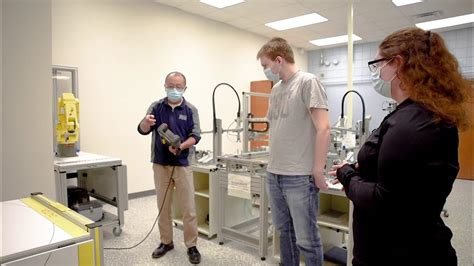What is an SMT Engineer?
An SMT (Surface Mount Technology) Engineer, also known as an SMT Process Engineer, is a professional who specializes in the design, implementation, and optimization of SMT manufacturing processes. SMT is a method for producing electronic circuits in which the components are mounted directly onto the surface of a printed circuit board (PCB). SMT Engineers play a crucial role in ensuring that the SMT assembly process runs efficiently, consistently, and with minimal defects.
Responsibilities of an SMT Engineer
The primary responsibilities of an SMT Engineer include:
- Developing and optimizing SMT assembly processes
- Troubleshooting and resolving production issues
- Conducting process capability studies and implementing process improvements
- Collaborating with cross-functional teams, including design, quality, and production
- Ensuring compliance with industry standards and customer requirements
- Maintaining and updating process documentation
- Training and mentoring production staff

Skills Required for an SMT Engineer
To become a successful SMT Engineer, one should possess a combination of technical and soft skills. Some of the essential skills include:
Technical Skills
- Strong understanding of SMT assembly processes and equipment
- Knowledge of electronic components and PCB design principles
- Familiarity with quality control methods and statistical process control (SPC)
- Experience with SMT manufacturing software and tools, such as pick-and-place machine programming software and solder paste inspection systems
- Understanding of lean manufacturing principles and continuous improvement methodologies
Soft Skills
- Excellent problem-solving and analytical skills
- Strong communication and interpersonal skills
- Ability to work effectively in a team environment
- Detail-oriented and organized
- Adaptable to changing priorities and deadlines

Education and Training Requirements
To become an SMT Engineer, a combination of education and practical experience is typically required. Here are the common education and training pathways:
Education
Most SMT Engineer positions require a bachelor’s degree in a relevant field, such as:
- Electrical Engineering
- Electronics Engineering
- Manufacturing Engineering
- Mechanical Engineering
- Industrial Engineering
Some employers may accept an associate’s degree in electronics or a related field, particularly if the candidate has significant practical experience.
Training and Certifications
In addition to formal education, SMT Engineers can benefit from specific training and certifications. Some of the valuable certifications include:
| Certification | Issuing Organization |
|---|---|
| Certified SMT Process Engineer (CSPE) | SMTA (Surface Mount Technology Association) |
| IPC Certification (e.g., IPC-A-610, J-STD-001, IPC-7711/7721) | IPC (Association Connecting Electronics Industries) |
| Six Sigma Green Belt or Black Belt | Various organizations (e.g., ASQ, IASSC) |
| Lean Manufacturing Certification | Various organizations (e.g., AME, SME) |
These certifications demonstrate a professional’s expertise and commitment to the SMT industry and can enhance career prospects.

Career Path and Advancement Opportunities
The career path for an SMT Engineer can vary depending on the individual’s interests, skills, and the organization they work for. A typical career progression might look like this:
- SMT Technician or Operator
- Junior SMT Process Engineer
- Senior SMT Process Engineer
- SMT Engineering Manager
- Director of SMT Operations
As SMT Engineers gain experience and expertise, they may have opportunities to advance into leadership roles, such as managing a team of engineers or overseeing the entire SMT operation. Some professionals may also choose to specialize in a particular area of SMT manufacturing, such as process development, equipment optimization, or quality control.
Salary and Job Outlook
The salary for an SMT Engineer can vary based on factors such as location, experience, education, and industry. According to PayScale, as of June 2023, the average annual salary for an SMT Process Engineer in the United States is $85,425. However, salaries can range from approximately $62,000 to $118,000 per year.
The job outlook for SMT Engineers is generally positive, as the demand for electronic devices and the complexity of PCB assemblies continue to grow. The U.S. Bureau of Labor Statistics (BLS) projects a 4% growth in employment for electrical and electronics engineers from 2019 to 2029, which is about as fast as the average for all occupations.
FAQ
1. What is the difference between an SMT Engineer and an Electronics Engineer?
An Electronics Engineer is a broader term that encompasses professionals who design, develop, and test electronic components, devices, and systems. An SMT Engineer, on the other hand, specifically focuses on the surface mount technology (SMT) assembly process, which is a method for producing electronic circuits by mounting components directly onto the surface of a printed circuit board (PCB).
2. Do I need a master’s degree to become an SMT Engineer?
While a master’s degree in a relevant field can be beneficial, it is not typically required for most SMT Engineer positions. A bachelor’s degree in electrical engineering, electronics engineering, or a related field, along with relevant experience and skills, is usually sufficient.
3. How can I gain practical experience in SMT manufacturing?
There are several ways to gain practical experience in SMT manufacturing:
- Internships or co-op programs during your undergraduate studies
- Entry-level positions, such as SMT Technician or Operator
- Participating in SMT-related projects or competitions
- Attending workshops, seminars, or conferences focused on SMT manufacturing
4. What are some of the challenges faced by SMT Engineers?
Some of the common challenges faced by SMT Engineers include:
- Keeping up with rapidly evolving technologies and manufacturing processes
- Troubleshooting complex production issues under time constraints
- Balancing competing priorities, such as quality, cost, and throughput
- Managing multiple projects and collaborating with cross-functional teams
- Ensuring compliance with industry standards and customer requirements
5. What are the key trends shaping the future of SMT manufacturing?
Some of the key trends shaping the future of SMT manufacturing include:
- Miniaturization of electronic components and devices
- Adoption of advanced packaging technologies, such as 3D packaging and system-in-package (SiP)
- Increased automation and the use of robotics in SMT assembly processes
- Growing demand for high-mix, low-volume production
- Emphasis on sustainability and eco-friendly manufacturing practices
In conclusion, becoming an SMT Process Engineer requires a combination of education, technical skills, and practical experience. With the right qualifications and a passion for electronics manufacturing, professionals in this field can enjoy rewarding careers and play a vital role in shaping the future of the electronics industry.

No responses yet